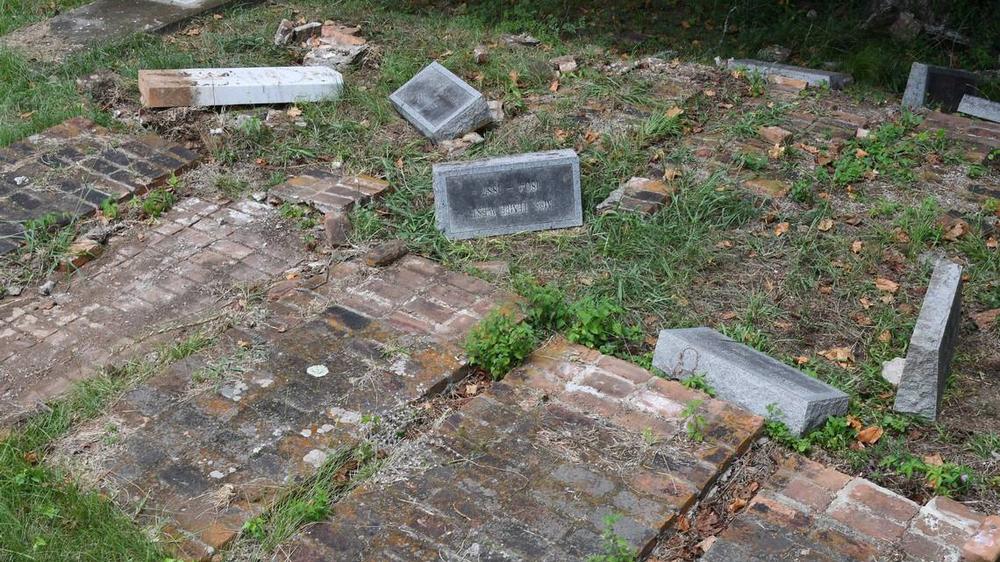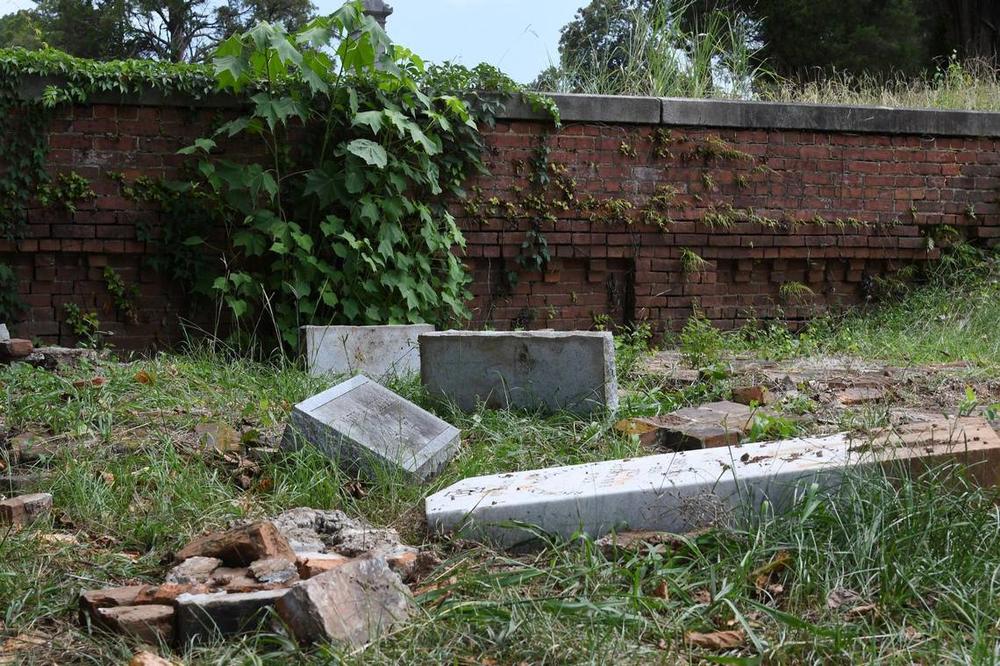
Caption
Headstones from the Woolfolk family sit overturned in the Rose Hill Cemetery on Wednesday, July 17, 2024, in Macon, Georgia. The Woolfolk family marker includes nine family members who were murdered in 1887. The area was vandalized this month.
Credit: Katie Tucker/The Telegraph


